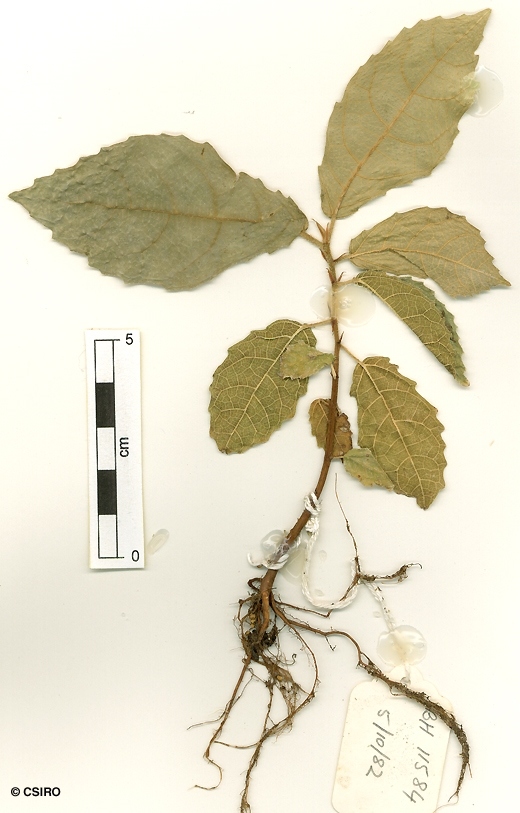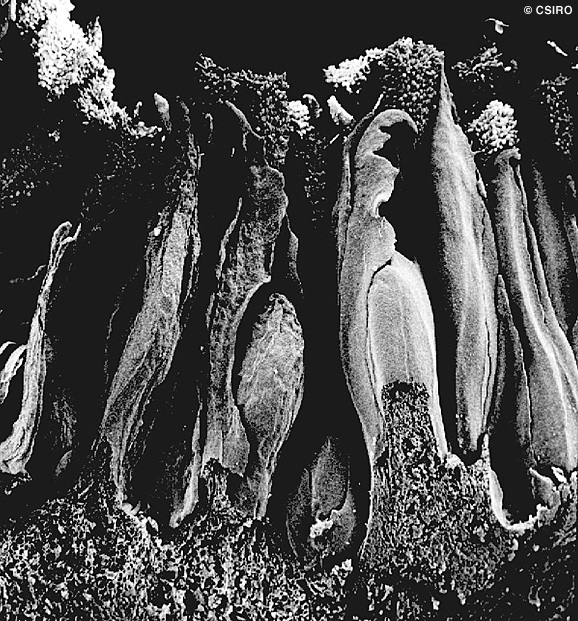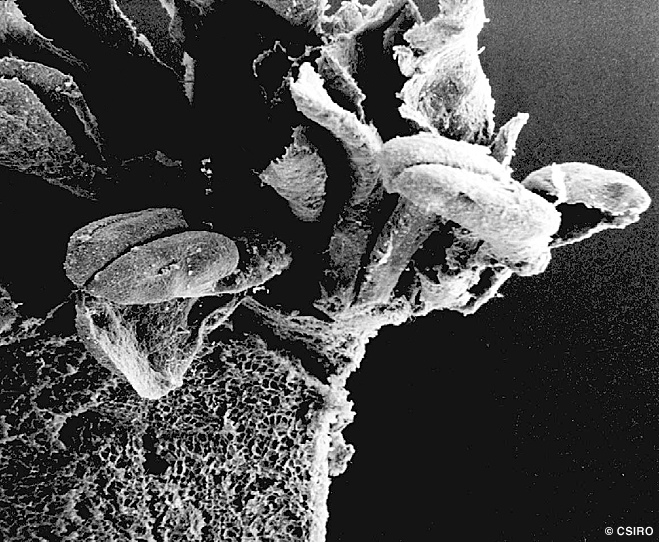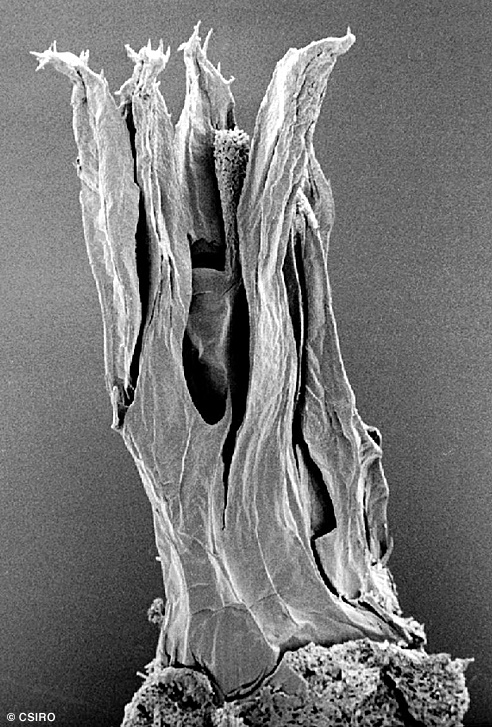Australian Tropical Rainforest Plants - Online edition
Ficus copiosa Steud.







Steudel, E.G. von (1840) Nomenclator Botanicus 1: 635. Type: S E Asia (?).
Fig; Plentiful Fig; Fig, Plentiful
Not a strangling fig. Blaze odour resembling that of rotten tomatoes (Lycopersicon esculentum). Bark exudate clear but usually turning brownish or pinkish brown on exposure. Yellow or pale brown fibrous stripes in the blaze.
Leaf blades rather large, about 10-25 x 5-12 cm. Petioles produce a watery milky exudate. Small prickles on the leaf blade impart a sandpapery feel, more obvious on the upper surface. Petioles also sandpapery. Leafy twigs about 0.3-0.8 cm diam. Stipules about 0.5-1.5 cm long.
Figs pedunculate, depressed globular, about 30-40 x 40-50 mm. Seeds smooth. Orifice +/- closed by interlocking apical and internal bracts.
Cotyledons orbicular, about 3-4 mm diam. At the tenth leaf stage: leaf blade ovate to elliptic, apex acute, base obtuse or auriculate, margin dentate, teeth evenly spaced along the margin, midrib raised on the upper surface, upper surface sandpapery because of short bristle-like hairs; oil dots very small, just visible with a lens; stipules narrowly triangular, papery; petiole and stem clothed in bristle-like hairs. Seed germination time 21 to 29 days.
Fruit eaten by Cassowaries. Cooper & Cooper (1994).





